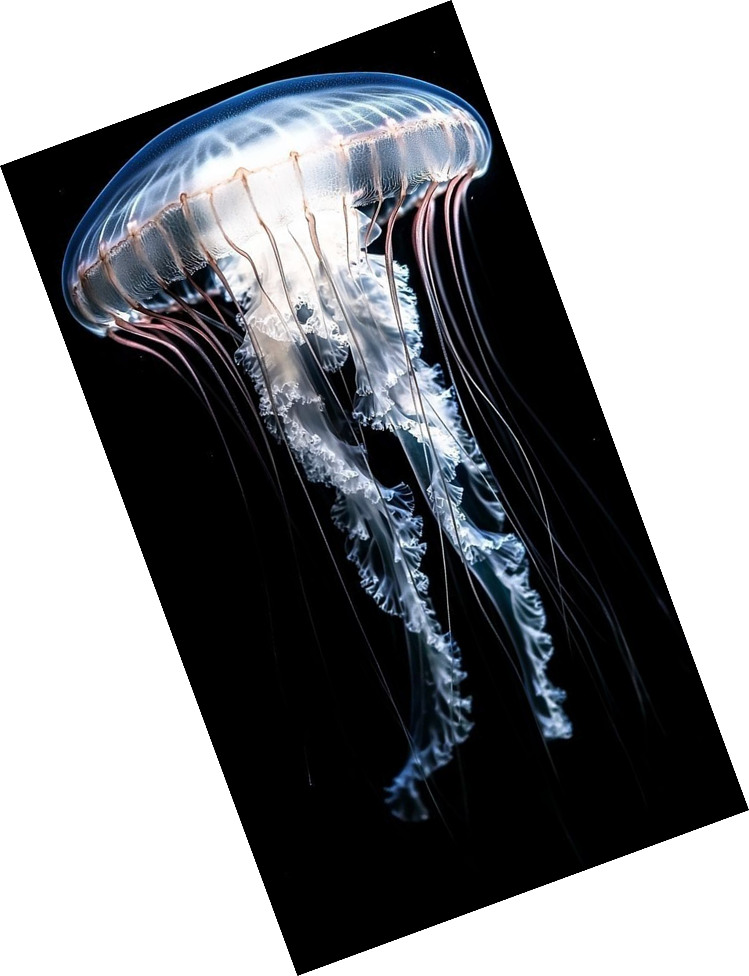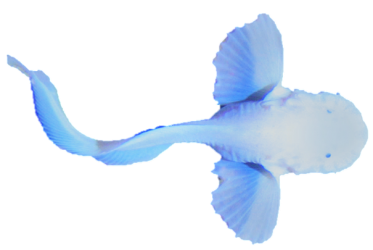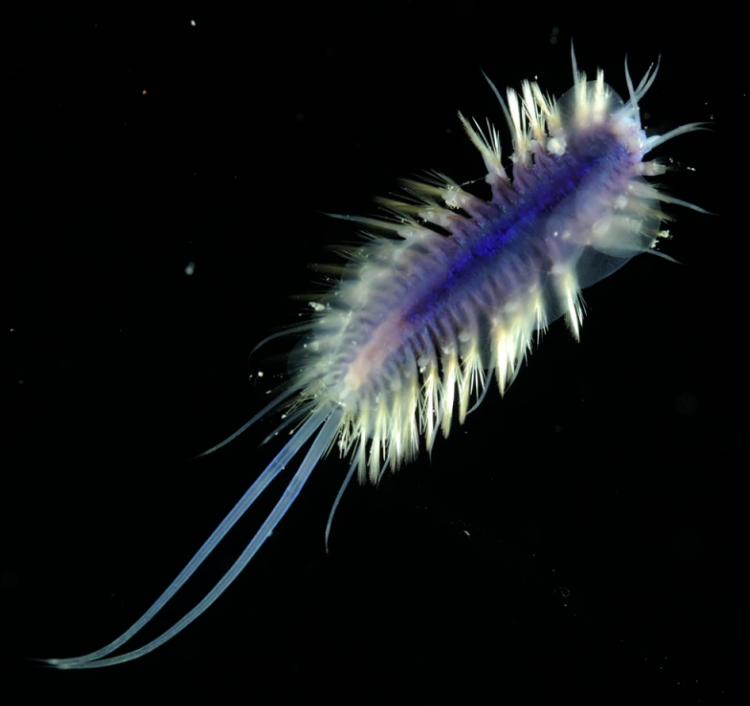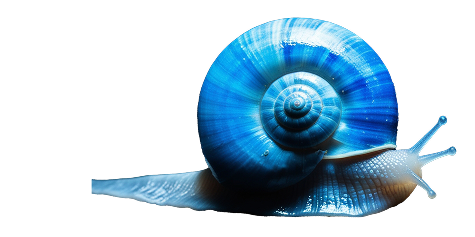BATH
YAL
The bathyal zone is a mysterious part of the ocean, stretching from 1,000 to 4,000 meters deep, where sunlight can no longer reach. Extreme conditions prevail here — low temperatures, immense pressure, and complete darkness. Yet life has not only survived but has also flourished in astonishing forms. In the bathyal zone, deep-sea fish such as anglerfish and deep-sea eels live, often equipped with bioluminescent organs that allow them to glow in the darkness. Giant squids and other cephalopods can also be found here, along with various crustaceans and invertebrates like sponges and polychaete worms that inhabit the ocean floor. The ocean floor in this zone is covered by soft mud, and rich ecosystems form near underwater mountains and canyons. Cold seeps and mineral deposits are also common here and are the subject of scientific research.
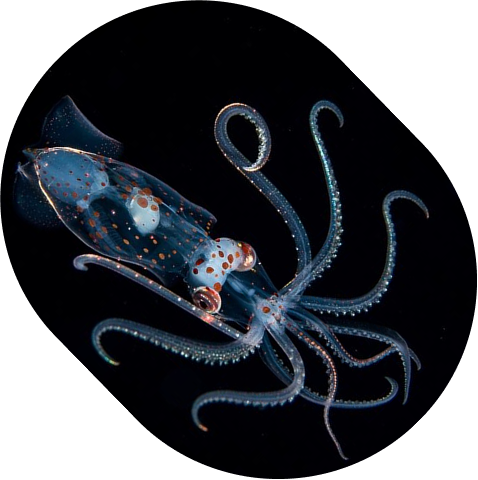
SQUID
Squid are fast-moving cephalopods that use jet propulsion
to swim.
In the deep sea, giant squid with large eyes are
common, and many species
can produce light.

POLYCHAETE WORMS
Polychaete worms are segmented creatures living on
the ocean floor.
They play a key role in breaking down
organic matter, and some species are bioluminescent.
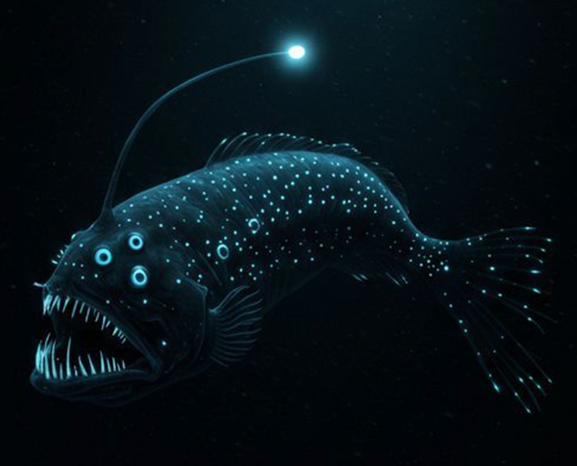
ANGLERFISH
The anglerfish is a deep-sea predator known for its
glowing lure, which it uses to attract prey in the darkness.
It has a huge mouth, sharp teeth,
and can swallow prey almost its own size.

